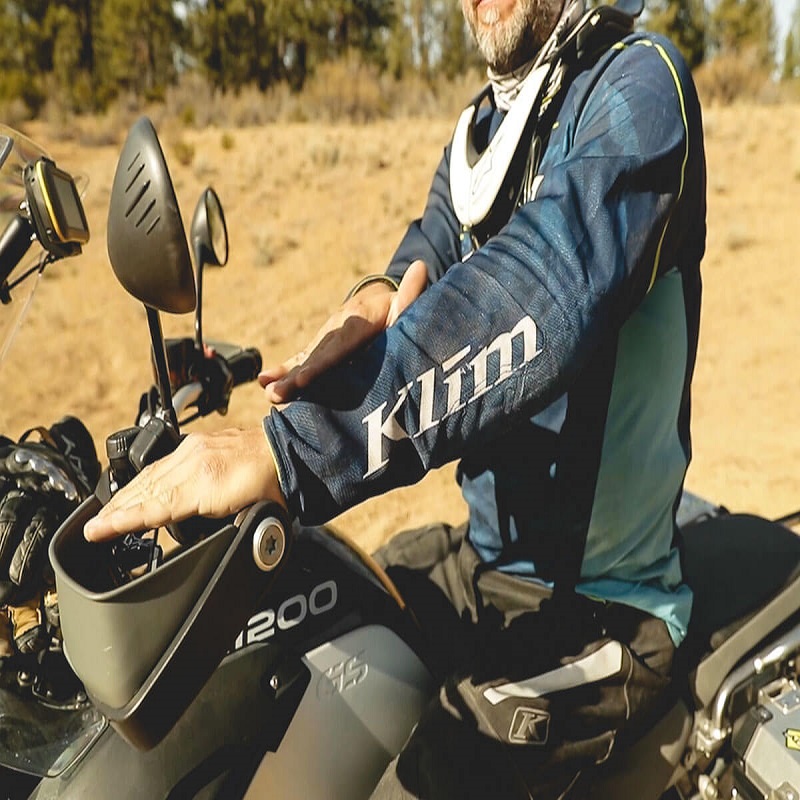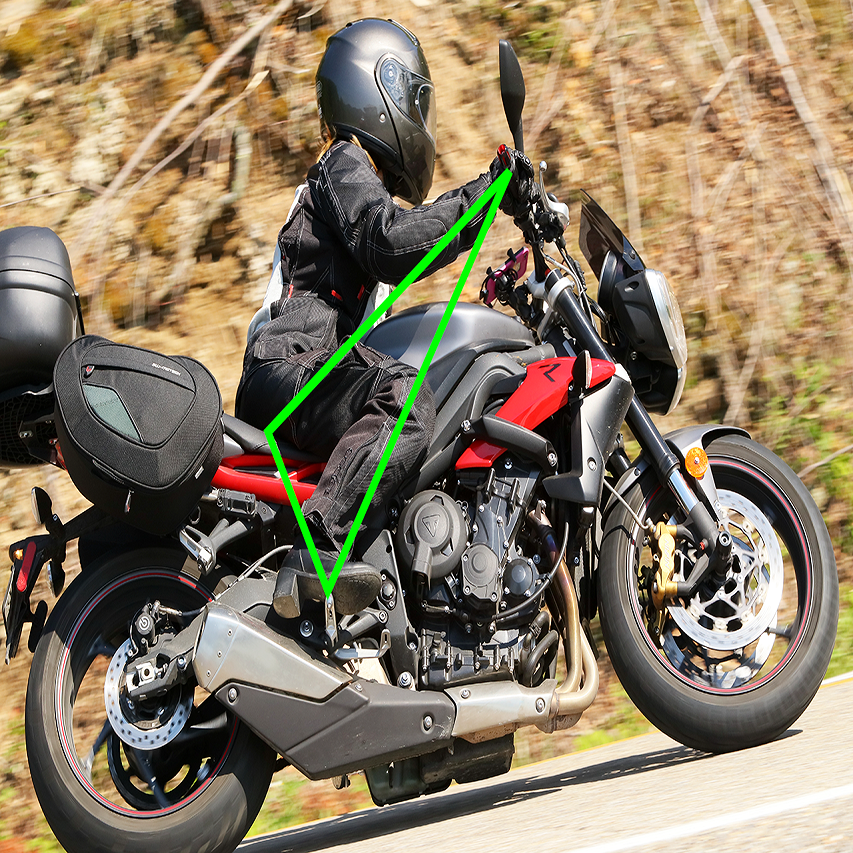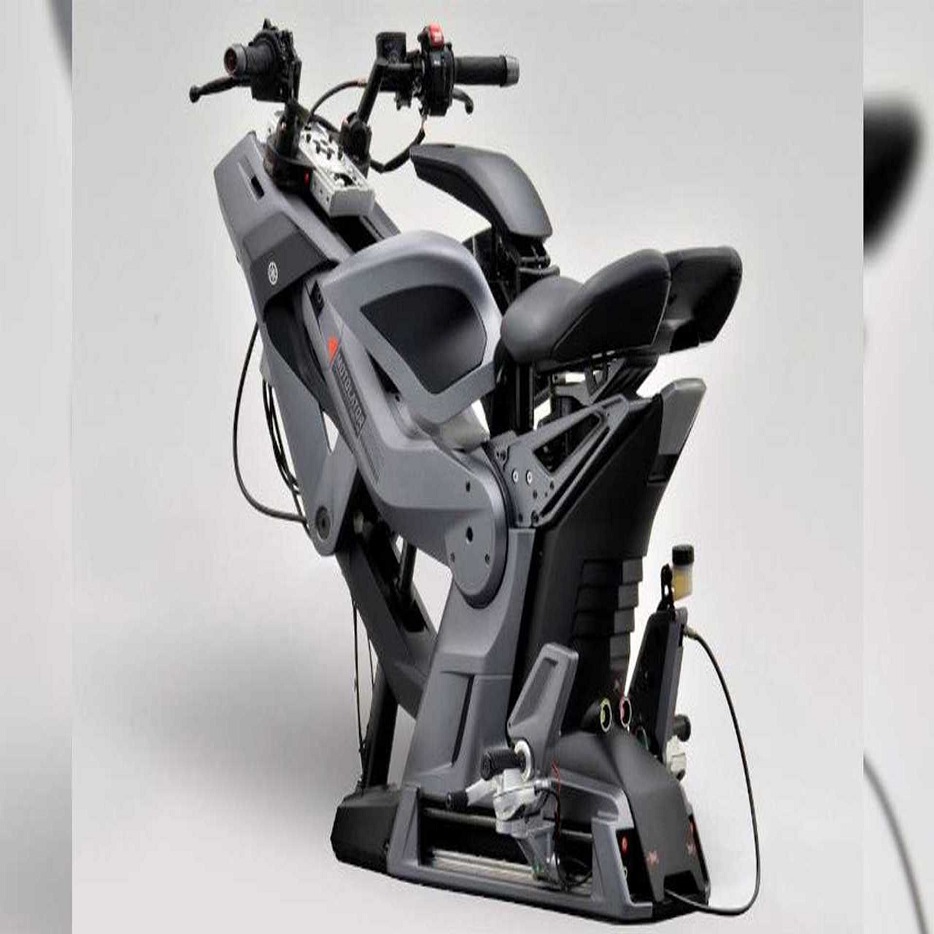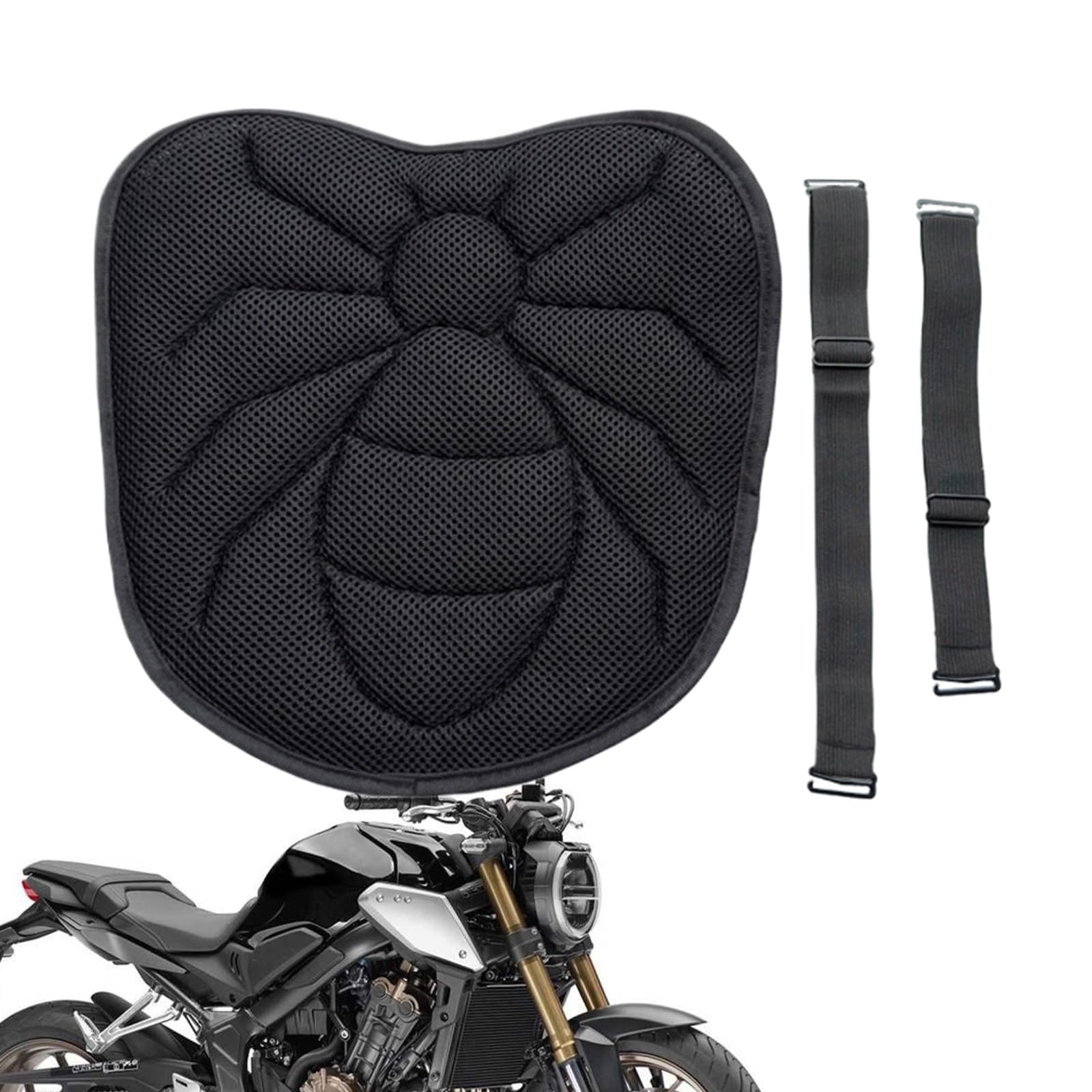Introduction to Motorcycle Ergonomics
Understanding motorcycle ergonomics is crucial for a comfortable and safe ride. Ergonomics, in simplest terms, is the science of designing equipment to fit human abilities and limitations. On a motorcycle, where the interaction between rider and machine is intimate, ergonomics plays a vital role. It shapes how a rider controls the bike, their comfort level during the ride, and ultimately, the overall riding experience. Getting this interaction right means longer rides with less fatigue and more enjoyment.

The Role of Ergonomics in Motorcycling
Motorcycle ergonomics is all about the fit between rider and bike. It affects how you handle the bike, how at ease you feel while riding, and how well you can manage your motorcycle within various conditions. When your bike is ergonomically sound, you reduce the risk of discomfort and injuries. This leads to a more engaging and secure riding experience. In short, ergonomics determines your command over the ride.
Key Elements of Motorcycle Ergonomics
Several components make up motorcycle ergonomics. The main elements include the seat position and height, the handlebar reach and design, and the footpeg placement. These components need to align with your body size and shape to ensure that you can reach all controls with ease, without overstretching or cramping. The goal is to create a natural, relaxed riding posture that allows for effective control and minimizes rider fatigue.
 Importance of Ergonomics for Riders
Importance of Ergonomics for Riders
Ergonomics play a crucial role in the overall motorcycle riding experience. Proper ergonomic design ensures not just comfort, but also impacts how riders control their bikes and their safety on the road. Below, we explore how ergonomics relate to these essential aspects of motorcycling.
Comfort and Long-Distance Riding
Long hauls on a motorcycle can be taxing without the right ergonomics. An ideal riding posture keeps you relaxed and free from pain. This is vital for endurance during lengthy rides. A well-ergonomically designed motorcycle allows for adjustments to the seat, handlebars, and footpegs. This customization prevents discomfort such as back pain, arm fatigue, and knee strain, common issues in long-distance journeys.
Relationship Between Ergonomics and Control
A good ergonomic setup gives you better control over your motorcycle. Handlebars within easy reach and a comfortably positioned seat ensure precise steering and braking. When your body is aligned with the bike’s controls, you can maneuver with less effort and more accuracy. This means a smoother and safer ride, whether navigating through tight turns or cruising on a straight path.
Safety Considerations Linked to Ergonomic Design
Safety and ergonomics are inseparable in the context of riding. A motorcycle that fits you well helps maintain better control which is key for safe riding. If you are comfortable, you can stay alert and respond quickly to unexpected situations. Customizing your motorcycle to suit your ergonomic needs isn’t just about comfort; it’s also about making your riding experience as safe as possible.
 Assessing Your Motorcycle’s Fit
Assessing Your Motorcycle’s Fit
Choosing the right motorcycle is like finding the perfect pair of shoes; it has to fit well. A motorcycle that matches your body shape and size improves your ride. It makes handling easier, reduces discomfort, and enhances performance. Assessing the fit of your motorcycle involves considering various factors.
Factors That Influence Rider Fit
When assessing fit, focus on key elements. These include seat height, reach to handlebars, and footpeg placement. Body shape and size should guide these choices. Make sure you reach controls comfortably. Your legs should not be too bent or too stretched. Riding position should feel natural.
Imagine sitting on different bikes. Think about how your arms feel reaching for the handlebars. Notice if your back is straight or leans forward. Pay attention to knee angle when feet touch the footpegs. Choose a bike that lets you maintain an easy, upright posture.
Using Ergonomic Simulators for Better Fit
Ergonomic simulators let you test different bike models virtually. Enter your body measurements and see how you’d fit each motorcycle. Simulators like Cycle-Ergo help you explore different seat positions and adjustments. They allow you to pick a model that promises comfort and control.
Trying out an ergonomic simulator before buying is smart. It saves you from later discomfort and costly modifications. If you have a bike, simulators can guide you on how to alter seat, handlebars, or footpegs for a better fit. These tools are invaluable, especially when physical test rides aren’t possible.
Remember, good fit equals safer and more enjoyable rides. Use tools available to ensure your motorcycle matches your ergonomic needs.
Modifications to Enhance Ergonomic Comfort
Adapting your motorcycle to fit your body can transform your riding experience. Here are adjustments to consider.
Options for Customizing Motorcycle Seats
Customizing your seat can enhance your comfort significantly. Options include adding gel pads, using custom seat covers, or adjusting the seat’s height.
Handlebar Adjustments and Choices
Handlebars are key for control. Adjust their height, angle, and distance from the rider. You can install risers or choose bars that suit your reach and stance.
Optimizing Footpeg Position for Comfort
Footpeg position affects your legs and back. Consider adjustable footpegs to find a natural leg position, reducing strain and increasing comfort on long rides.
The Science of Ergonomics and Rider Performance
Ergonomics is a science that can boost riding performance. The right fit between rider and bike means a smooth, effective ride. Riders with good ergonomics use less energy to control the bike. This leaves more energy for focus and endurance. It’s all about position, support and minimizing strain.
How Proper Ergonomics Enhance Riding Performance
Proper ergonomics let you ride better and longer. The ideal reach to handlebars keeps control tight. A well-placed seat and footpegs give stability and support. All this adds up to a smoother ride. You get quicker reflexes and less fatigue. And that means better overall performance. Remember, it’s crucial to adjust your bike to suit your body for the best results.
Building Confidence Through Optimized Ergonomics
Feeling at one with your motorcycle builds confidence. It lets you handle your bike with ease and assurance. When every part fits just right, you worry less about discomfort. This gives you the confidence to tackle more challenging rides. It’s simple; better ergonomics equals more riding assurance. Customize for comfort, and you’ll feel the difference on every ride.
 Tools and Technology for Motorcycle Ergonomics
Tools and Technology for Motorcycle Ergonomics
Modern tech advancements have revolutionized how riders achieve the perfect fit with their motorcycles. There are several tools out there to help with this. From brand-specific systems to online simulators, the resources available are invaluable in attaining that ideal ergonomic configuration.
Discovering the Kawasaki Ergo-Fit? System
Kawasaki pioneered the Ergo-Fit? system, which changed the game for rider comfort. This system allows riders to adjust critical aspects of their motorcycles to suit their personal dimensions. Features like adjustable seats, handlebars, and footpegs make it possible to tailor the fit perfectly.
Getting started is simple. Kawasaki dealers assist by adjusting the bike’s components to match each rider’s height, arm length, and leg reach, creating an optimized riding experience specially designed for comfort and control.
Utilizing Motorcycle Ergonomic Simulators
But Kawasaki’s system isn’t the only tool for ergonomic customization. Motorcycle ergonomic simulators like Cycle-Ergo provide a digital solution. Riders input their measurements online and virtually adjust different motorcycle models to gauge fit and comfort.
These simulators show how changes in the seat, handlebars, and footpegs can affect your riding posture. They allow you to experiment with different configurations before making any physical changes, saving time and money. For those unable to test ride specific models, simulators can be a significant first step toward a personalized ergonomic setup.
With these tools, riders can ensure motorcycle ergonomics work in their favor, enhancing comfort, control, and safety before they hit the road.
 Final Thoughts on Motorcycle Ergonomics
Final Thoughts on Motorcycle Ergonomics
As we conclude our discussion on motorcycle ergonomics, it’s important to highlight the significance of rider comfort and control. Ergonomics is not just about the immediate feel of the ride; it’s about the lasting impact on your body and your enjoyment on the road. Before diving into modifications or purchasing ergonomic accessories for your motorcycle, there are several considerations to keep in mind.
Considerations Before Making Modifications
Making changes to your motorcycle should be a thoughtful process. Here are key points to consider:
- Know Your Needs: Identify the specific areas causing discomfort or control issues. This helps target your modifications effectively.
- Research the Options: There are many products designed to improve ergonomics. Look into reviews and ask for rider opinions.
- Budget Wisely: Some adjustments can be expensive. Balance cost against the potential for improved ride quality.
- Future Resale: Personalized modifications might not appeal to all buyers. Think about resale value before making permanent changes.
- Legal and Safety Standards: Ensure all modifications comply with local laws and do not compromise safety.
When to Seek Professional Help for Ergonomic Adjustments
At times, professional assistance is necessary to ensure your bike is ergonomically sound. Seek help in these situations:
- Complex Modifications: Changes to suspension or significant alterations may require expert knowledge.
- Health-Related Concerns: If you have persistent pain or an injury, an ergonomics specialist can offer advice tailored to your needs.
- Uncertainty in Fitting: Professionals can provide a fitting session to adjust your bike for optimal ergonomics.
- Installation of Parts: For complex parts like adjustable footpegs or handlebars, professional installation ensures safety and correctness.
Remember, motorcycle ergonomics is as personal as the ride itself. By finding the right fit, you can enhance your control, comfort, and safety on the road. Take time to make informed decisions about modifications and don’t hesitate to seek help when needed to achieve the perfect ride.

Leave a Reply